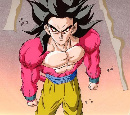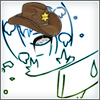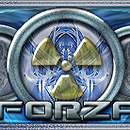| Author |
Message |
Lfs
 Z Artist
Z Artist


|
 Saturday, January 30, 2010 Saturday, January 30, 2010
A simple structure to particle swap.
|
Ameon



|
 Saturday, January 30, 2010 Saturday, January 30, 2010
incredible. but particles shadow casting requires a titanic efforts. besides can Quake 3 engine able to handle such these stuff?
|
Buksna
 Blaizing
Blaizing


|
 Saturday, January 30, 2010 Saturday, January 30, 2010
Is it going to be like in Earth Special Forces you fire at structure, structure breaks, you see flying pieces but in the end structure stays complete or it will be destroyed
|
Lfs
 Z Artist
Z Artist


|
 Saturday, January 30, 2010 Saturday, January 30, 2010
Ameon wrote : incredible. but particles shadow casting requires a titanic efforts. besides can Quake 3 engine able to handle such these stuff?
It can.
Buksna wrote : Is it going to be like in Earth Special Forces you fire at structure, structure breaks, you see flying pieces but in the end structure stays complete or it will be destroyed
The building CAN be destroyed.
And I didn't say this will be in-game, I just explained of how it can be done. One of thousand possible solution.
|
Buksna
 Blaizing
Blaizing


|
 Saturday, January 30, 2010 Saturday, January 30, 2010
is it posible to make flying pices doing damage...like hitting opponent or hitting another object destroying it a little or its a complex coding or something
|
Zeth
 The Admin
The Admin


|
 Saturday, January 30, 2010 Saturday, January 30, 2010
incredible. but particles shadow casting requires a titanic efforts. besides can Quake 3 engine able to handle such these stuff?
I think Lfs was moreover referring to the shading on the particles (via the normal maps) over the shadow projection. However, even realtime dynamic shadows are possible in a variety of approaches depending on your targeted hardware.
It seems as though many people often think that an engine's date reflects on it's overall maximum quality. Simply offering non-capped triangle mesh support and GPU shaders to nearly ANY engine in existence and you'll be able to pull off most "next-gen" feats pretty effortlessly regardless of it's age.
|
nielsmillikan



|
 Saturday, January 30, 2010 Saturday, January 30, 2010
Questions.. will the boulders of the destroyed structure remain or disappear like the other games? Also only structures can receive damage or even the terrain? For instance the Spirit Bomb or the supernova attack will create craters?
|
Malek


|
 Saturday, January 30, 2010 Saturday, January 30, 2010
I was waiting for this kind of update
Few questions then:
Can ground be destroyed too ? I mean as big is the beam ? Genki Dama will destroy all the map ? Will a tree be entirly destroyed like the building or just a part of it ? Will the particles stay on the map PLEASE ??
|
Forza
 Gerlacious
Gerlacious


|
 Saturday, January 30, 2010 Saturday, January 30, 2010
Stay at the conceptual level then, Malek. :p
|
Lfs
 Z Artist
Z Artist


|
 Saturday, January 30, 2010 Saturday, January 30, 2010
nielsmillikan wrote : Questions.. will the boulders of the destroyed structure remain or disappear like the other games? Also only structures can receive damage or even the terrain? For instance the Spirit Bomb or the supernova attack will create craters?
Malek wrote : I was waiting for this kind of update
Few questions then:
Can ground be destroyed too ? I mean as big is the beam ? Genki Dama will destroy all the map ? Will a tree be entirly destroyed like the building or just a part of it ? Will the particles stay on the map PLEASE ??
*points to the topics name*. I believe structure and terrain are two different things.
Particles should fade away after some time as it would use too many resources.
|
Alex
 Al Knows
Al Knows


|
 Saturday, January 30, 2010 Saturday, January 30, 2010
While particle debris is a very good way of covering up transitions between undamaged & damaged geometry along with making the explosions seem more chaotic, I can't say having a whole 3D structure blow up into large, generic 2D rubble particles on their own would look too convincing.
Though I would say it would make a very companion to a "pre-fractured mesh" type method, such as Red Faction 3 uses for it's structures and the recent Unreal Engine does it's fracturing.
Basically you take a copy of the structure and cut it up into many pieces, but keep it all "together" so it retains it's form. Further it could be hierarchal so to give more control over how different areas fracture. Example: a billboard is fractured into so its supports are debris but the billboard it self is still "whole", then that whole but unattached billboard is fractured into large pieces and the large pieces are in turn fractured into smaller pieces. This would allow rubble to be formed from it but retain the structure's identity as well as allowing partial destruction.
When it's initially blown up the unfractured mesh is replaced with the top level fractured one, pieces within the blast area are then replaced with lower level depending on the strength of the blast and the structure. Once the structure's been properly replaced with the correct fracture levels, pieces within the blast area are blown away from the area, possibly define some pieces as "supports" which when destroyed cause the whole thing to come down.
Minor pieces of rubble would be represented by the particles while major elements of the structure are represented by the fractured mesh, the combination of which would cover up the transitions, look fairly dynamic due to the hierachial fracturing and not be too costly as only the destroyed sections of the structure are at the lower levels of fracturing.
LOD could further be used so at long distances it displays fractured geometry elements at the higher level or not at all (for example. a section of a wall has a hole in it, at distance determine which areas are unnaffected and render at their top level and traverse the hierarchy figuring out how much of that level is still there determining something along the lines of: less than 25% = don't render, more than 75% render unfractured element, else go to the next hierarchy level) with the rubble meshes fading out at distance depending on their fracture level (for example. if it's just, for example, a knocked down billboard it's always rendered but if it's been blown to pieces the pieces get faded out.)
Though doing it this way would likely need collision mesh support, such as Smokin' Guns has, to make sure the fractured elements collide with the world & players properly but that's a desired feature anyway.
The technique could be furthered for cliffs, buildings and anything which needs to be 'cratered' when a player is knocked into them by having the fracture layered, so a hole is created in the outer layer but the internal layer stays solid until hit again or the force of the impact was enough to blast through that as well.
Also, I think low level rubble should disappear after a certain amount of time for memory and performance reasons.
I think we should also consider making parts of structures indestructable (for example. foundations, bottoms of destroy walls, twisted girders, etc.) so there's still some form of environment left after a half hour's spamming of spirit bombs, basically so you can tell there was a structure there. Obviously that would involve creating seperate "damaged" versions of each of the indestructable top level sections in the structure's hierarchy to display when those sections get destroyed.
|
Malek


|
 Thursday, April 22, 2010 Thursday, April 22, 2010
Forza wrote : Stay at the conceptual level then, Malek. :p
explain I will understand what you mean
|
Super Snake



|
 Thursday, April 22, 2010 Thursday, April 22, 2010
Malek wrote : Forza wrote : Stay at the conceptual level then, Malek. :p
explain I will understand what you mean
It's a concept. An idea. There isn't even talk about implantation.
It is a POSSIBILITY.
I can't break it down further then that.
@Alax: Just wondering since you hadn't brought it up (or my eyes where to tired to pick it up or understand), how are you planning to let the elements interact with each other? It seems to me that you need some power to drive physics like that. It will be almost improbable to get it working smoothly right? Seeing as most of the objects can get 'stuck' to each other.
|
